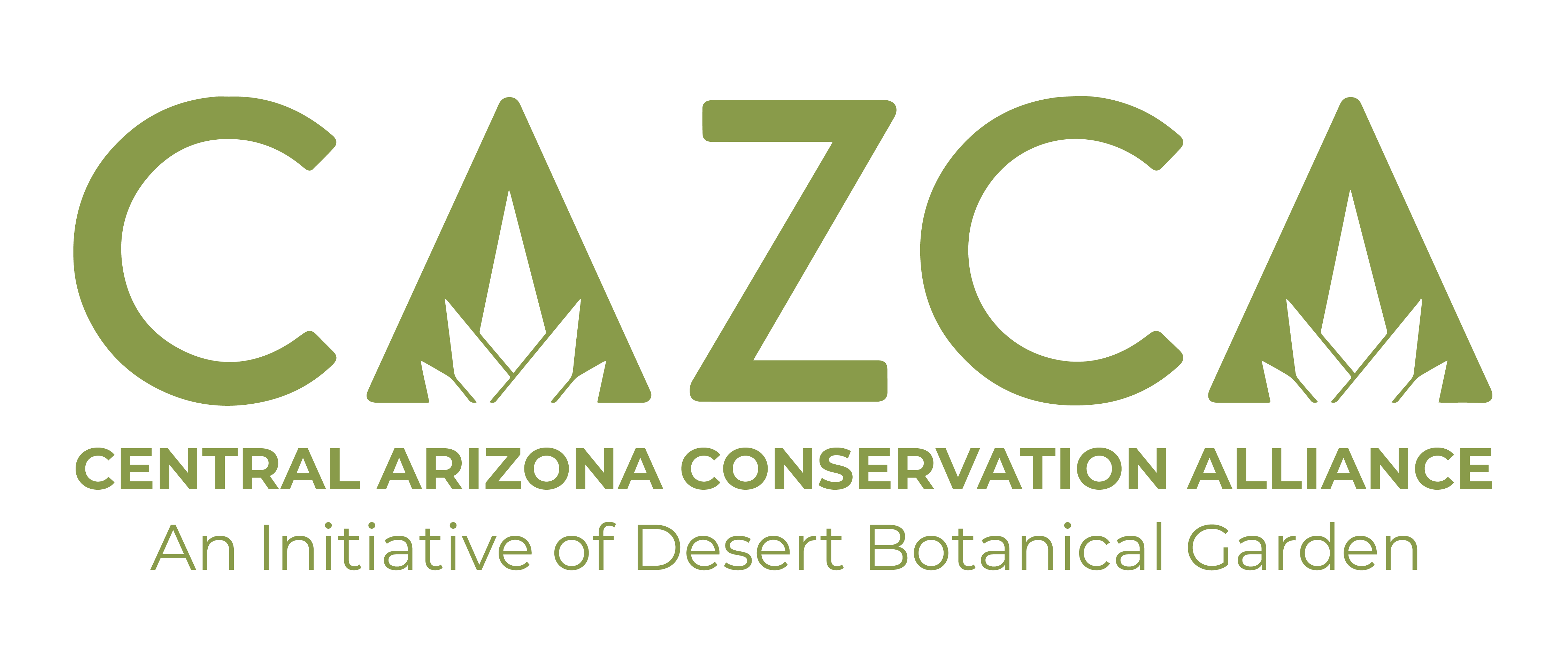May is all about Wildfire Awareness and now is the time to learn what you can do to be prepared and learn more about protecting the Sonoran desert. 2020 was one of the worst wildfire seasons in Arizona, and Desert Botanical Garden and Central Arizona Conservation Alliance (CAZCA) are offering ways residents can make a difference by increasing their knowledge about protecting natural areas.
According to the Arizona Department of Forestry and Fire Management (DFFM), humans caused 82% of wildfires in the state in 2020. These result from campfires left unattended, fireworks, the burning of debris, negligently discarded cigarettes, target shooting, accidents and even intentional acts of arson.
Here are five simple steps to be more prepared for wildfire season.
1. What you do in nature makes a huge difference. Put out campfires, prevent sparks while shooting and driving, be cautious when burning debris in your yard, don’t throw lit cigarettes out the window. Learn more at smokeybear.com.
2. Non-native plants provide fuel for wildfires, as they densely carpet and crowd the desert soil. Decrease wildfire risk by planting native plants in your yard. Not only do we decrease wildfire risk but also support local wildlife. Learn more about native plants at aznps.org.
3. Every second counts! Report wildfires as soon as possible to stop the spread. Call 911 or 800.309.7081 for wildland fires and risk incidents with the DFFM Arizona Interagency Dispatch. Learn about reporting wildfires: dffm.az.gov/fire/information
4. Help map and remove invasive plant species from parks, preserves and other natural areas, to decrease wildfire risk in the communities. Become a Desert Defender today! Learn more: bit.ly/desertdefenders.
They will share resources and information every Friday in the month of May through the Wildfire Awareness page in the Desert Botanical Garden blog. Read the blog: https://dbg.org/wildfire-awareness-prevention/.Want to learn more and support efforts to prevent human-caused wildfires? Attend and participate in events happening locally. Learn how to ensure your outdoor adventure doesn’t result in a fire and help educate others. Support local organizations and agencies by volunteering to remove invasive plant species and work on restoration or support with a donation.
Virtual Events Occurring in May:
May 11 at 6 p.m. MST- EcoQuestions with Kara Barron: Fire in the Sonoran Desert
Register: https://bit.ly/3sgvFhW
May 18 at 6 p.m. MST – Fire in the Desert with Dr. Molly Hunter
Register: https://cazca.org/events/fire-in-the-desert/
May 26 at 5:30 p.m. MST – What Fuels Wildfires with Dr. Ben Wilder
Register: https://cazca.org/events/what-fuels-wildfires/
May 1-31 – EcoQuest: Up In Flames
Join: https://www.inaturalist.org/projects/up-in-flames
The desert is resilient and although we are seeing certain species of cacti and desert plants regrow, we know the most iconic of species, the Saguaro for example, have been impacted in ways we have yet to see.
Fire-adapted ecosystems, like pine forests or savannah plains of Africa, experience regular fires that can benefit the land. To the best of knowledge, natural fires have not historically been a significant part of the Sonoran Desert. Our iconic plant species like Saguaros and barrel cactus are not built to withstand intense, large-scale wildfires. Compounding factors such as climate change, invasive species, and a rise in outdoor recreation have contributed to an increase in major fires here in the Sonoran Desert. These larger, and often hotter fires that are happening more often is a huge threat to our unique Sonoran Desert.
After a wildfire, the road to recovery isn’t easy, even when homes and other structures aren’t burnt. Restoration of parks and preserves is costly, as wildfires not only damage the landscape but also damage trails and recreation areas.
All the burned patches of land without any vegetation begin to erode after rains and use, scarring the land further, adding to the already high costs of restoration and revegetation. Ash, sediments, and toxins are also flushed into watersheds after fires, compromising water sources for months or even years after a burn.
CAZCA has supported partners with research and data collection after the fires to gauge the extent of the damage. Both CAZCA and EcoFlora have worked extensively to raise awareness in the community on the impact of invasive plant species, wildfire prevention and the impacts of fires in the Sonoran Desert.
Looking for other opportunities to get involved? Join the Desert Defenders community science program or learn about the Firewise USA™ program aimed at preparing and educating communities on wildfire safety and minimizing risk.
About Central Arizona Conservation Alliance (CAZCA)
Launched in 2012 by Desert Botanical Garden, the Central Arizona Conservation Alliance (CAZCA) unites a network of land managers, scientists, policy makers, educators, community members, state and federal agencies, and conservation-based nonprofit organizations to develop, align and elevate efforts to conserve and enhance open space in the Central Arizona region. Comprised of more than 60 partnering organizations, CAZCA’s vision is a sustainable preserve system that supports healthy ecosystems and provides beautiful, safe open spaces for healthy, vibrant communities.
About Desert Botanical Garden
Discover the tranquil vibrancy of 50,000 desert plants nestled amid the red rocks of the Papago Buttes at Desert Botanical Garden. An Arizona icon for more than 82 years, the Garden has grown into a compelling attraction and desert conservation pioneer, offering other worldly plants, vibrant trails, world-class exhibitions, festive events and so much more.
###


